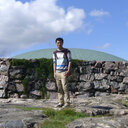Clinical and epidemiological features of patients with clonorchiasis.
Keywords
Coimriú
OBJECTIVE
To study the clinical and epidemiological features of patients with clonorchiasis so as to provide scientific evidences for the diagnosis and prevention of clonorchiasis.
METHODS
Stools from 282 subjects suspected of having clonorchiasis were examined for helminth eggs with modified Kato's thick smear and sedimentation methods, and their sera were tested for HAV-DNA, HBV-DNA, HCV-RNA, HDV-RNA and HEV-RNA with polymerase chain reaction (PCR). Clinical symptoms of patients with clonorchiasis only were analyzed, and their blood samples were tested for circulating antigen (CAg) with Dot-ELISA, eosinophilic granulocyte count, and alanine aminotransferase (ALT). Meanwhile, they were asked to provide data of occupation, eating habit, hygienic habit and knowledge of clonorchiasis. In addition, the ecosystem of the environment in epidemic areas was surveyed.
RESULTS
Among the 282 patients, 61 (21.43%) were infected with clonorchis sinensis only, 97 (34.64%) were co-infected with clonorchis sinensis and other pathogens, 92 (32.86%) were infected with hepatitis virus only and 31 (11.07%) neither with clonorchis sinensis nor hepatitis virus. Among the 61 patients with clonorchiasis only, there were 14 (22.95%) subjects with discomfort over hepatic region or epigasfrium, 12 (19.67%) with general malaise or discomfort and inertia in total body, 6 (9.84%) with anorexia, indigestion and nausea, 4 (6.56%) with fever, dizziness and headache (6.56%), and 25 (40.98%) without any symptoms; sixty one (100%) with CAg (+), 98.33% (59/60) with eosinophilic granulocytes increased and 65.00% (39/60) with ALT increased. B-mode ultrasonography revealed 61 cases with dilated and thickened walls of intrahepatic bile duct, and blurred patchy echo acoustic image in liver. Twenty-six cases had stones in the bile duct, 39 cases had slightly enlarged liver with diffuse coarse spots in liver parenchyma. Twenty cases had enlarged gallbladder with thickened coarse wall and image of floating plagues, 9 cases had slightly enlarged spleen. By analysis of epidemiological data, we found that the ecologic environment was favorable for the epidemiology of clonorchiasis. Most patients with clonorchiasis were lack of knowledge about the disease. Their living environment, hygienic habits, eating habits and their occupations were the related factors that caused the prevalence of the disease.
CONCLUSIONS
The clinical symptoms of clonorchiasis are non-specific, and the main evidences for diagnosis of clonorchiasis should be provided by etiologic examination, B-mode ultrasonography and clinical history. The infection of clonorchis sinensis is related to occupations, bad eating habits and lack of knowledge about prevention of the disease.


